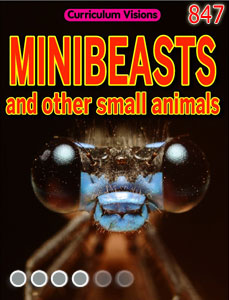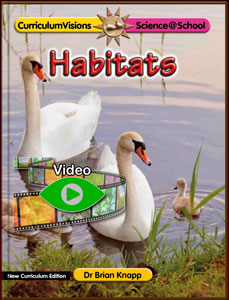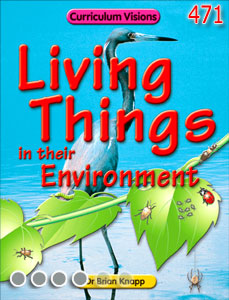Most things we call minibeasts are called arthropods by scientists.
An arthropod (meaning ‘jointed foot’) is the name given to most minibeasts that we would call insects, spiders, crabs, woodlice and so on. They make up much of the animal world, and so you might expect, they have many forms.
Each different form that breeds within itself is called a species. There many be ten million species of arthropod in the world, making up over three quarters of all known animal species in our world – and of that, half are beetles.
What they have in common is an external skeleton, or shell. It is made up of a material similar to our fingernails; hard even when thin, and able to take tough knocks without breaking. However, unlike out fingernails, the shell of these animals does not grow continuously. So from time to time, as they grow, all of these animals have to shed, or moult, one shell and grow another, larger one.
The other thing about all of these animals is that they are made of a number of parts joined together. Each of these parts is called a segment. Some of the segments has one or more pairs of legs. So in the case of insect there are three parts, or segments, and they have six legs. In the case of millipedes they may have many have hundreds of segments and so hundreds (but not thousands) of legs.
These are very small creatures, but they have an amazing ability to adapt to all kinds of environment. They are probably the most successful of all animals, and they can be found in the fossil record for nearly 600 million years.
Because they are small they can easily be overlooked. But they are everywhere, and a multitude of tiny bodies adds up. Usually in a square kilometre of wilderness there is more weight of arthropods than all other animals - horses, bears, wolves, badgers, deer or whatever, put together).
They cannot see as we do, but have simple eyes that mostly tell the difference between light and dark – enough to know when food (a prey) or a threat (a hunter or carnivore) is about. They also have very simple ways of dealing with getting food or escaping being eaten. You see it, for example, in flies and grasshopper. They simply fly or jump out of the way. They have no idea where they are going, and this is what makes minibeasts scary to some people. They seem to be coming towards us no matter what we do. Well, in fact, they have no idea we are there, except as we show as moving light and dark patches in their eyes.
We put a lot of store by our eyesight, so what do these minibeasts do when they have such limited sight? They sense the world around them with many kinds of feelers. They have bristles all along their bodies that poke through their shells. These bristles can ‘smell’ the environment. Some can even squirt out nasty chemicals to ward off other animals that might eat them. They have feelers at the front called tentacles or antennae, and these are very sensitive to both touch and smell. So although they have simple brains and see very little, they manage quite well.
All of these animals lay eggs. Sometimes the eggs hatch into grubs (larvae) and grow and grow until a stage where they wrap themselves up into a silken cocoon and changed into an adult. Some, however, hatch directly as tiny adults.
Many of them lose water through their shells, and this is why they keep under cover, and why many are active in the moist environment of night and not day. Those that are active by day tend to have shells with a waxy coating that stops water loss.
So you see, there are many successful ways of living, and we have been around just a tiny fraction of the length of time of arthropods.
Here are some common names of arthropods:
six legs: insect such as a beetle or fly
eight legs: spider (arachnids), mite, tick
crustacean: shell of overlapping parts (crab, shrimp, woodlouse)






